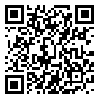Volume 10, Issue 2 (Summer 2006)
Physiol Pharmacol 2006, 10(2): 143-150 |
Back to browse issues page
Download citation:
BibTeX | RIS | EndNote | Medlars | ProCite | Reference Manager | RefWorks
Send citation to:



BibTeX | RIS | EndNote | Medlars | ProCite | Reference Manager | RefWorks
Send citation to:
Abbasnejad M, Mirtajadini M, Afarinesh M R, Hassibi N. Valuation of Origanum vulgare (leaves, stems and flowers) extract on spatial learning in male rats. Physiol Pharmacol 2006; 10 (2) :143-150
URL: http://ppj.phypha.ir/article-1-252-en.html
URL: http://ppj.phypha.ir/article-1-252-en.html
Abstract: (16426 Views)
Introduction: Origanum vulgare a rich source of natural phenolic antioxidants and has potential to be a source
nutritional ingredients for functional food. Herbs such as Origanum have long been used in food preservation
d in traditional medicine in the treatment of common ailments and have potential for positive modulation
oxidation-linked diseases such as diabetes. Here we investigated the effect of aqueous extract of Origanum
aves, stems and flowers) on spatial learning.
Methods: After scientific identification, the leaves were used for extraction. 35 adult NMRI male rats weighing
0-350 gr were utilized in 5 groups. Control group (no injection), the second group (saline injected), the extracts
h different doses (150, 300, 450) mg/kg were injected intraperitoneally to experimental animals. All animals
re trained for a spatial learning task using T-maze and were then trained subsequently daily based on standard
thod.
Results: Statistic analysis ANOVA showed that Origanum aqueous extract significantly decreased the number
learning and error in simple and reverse learning (p<0.05) and it had no significant effect on delay time in both
e of learning.
Conclusion: It can be concluded that the effect of Origanum extract on learning can be due to its antioxidant
d presence of anti acetylcholine estrase compounds such as ursolic acid.
Type of Manuscript: Experimental research article |
Subject:
Others
| Rights and permissions | |
 |
This work is licensed under a Creative Commons Attribution-NonCommercial 4.0 International License. |





